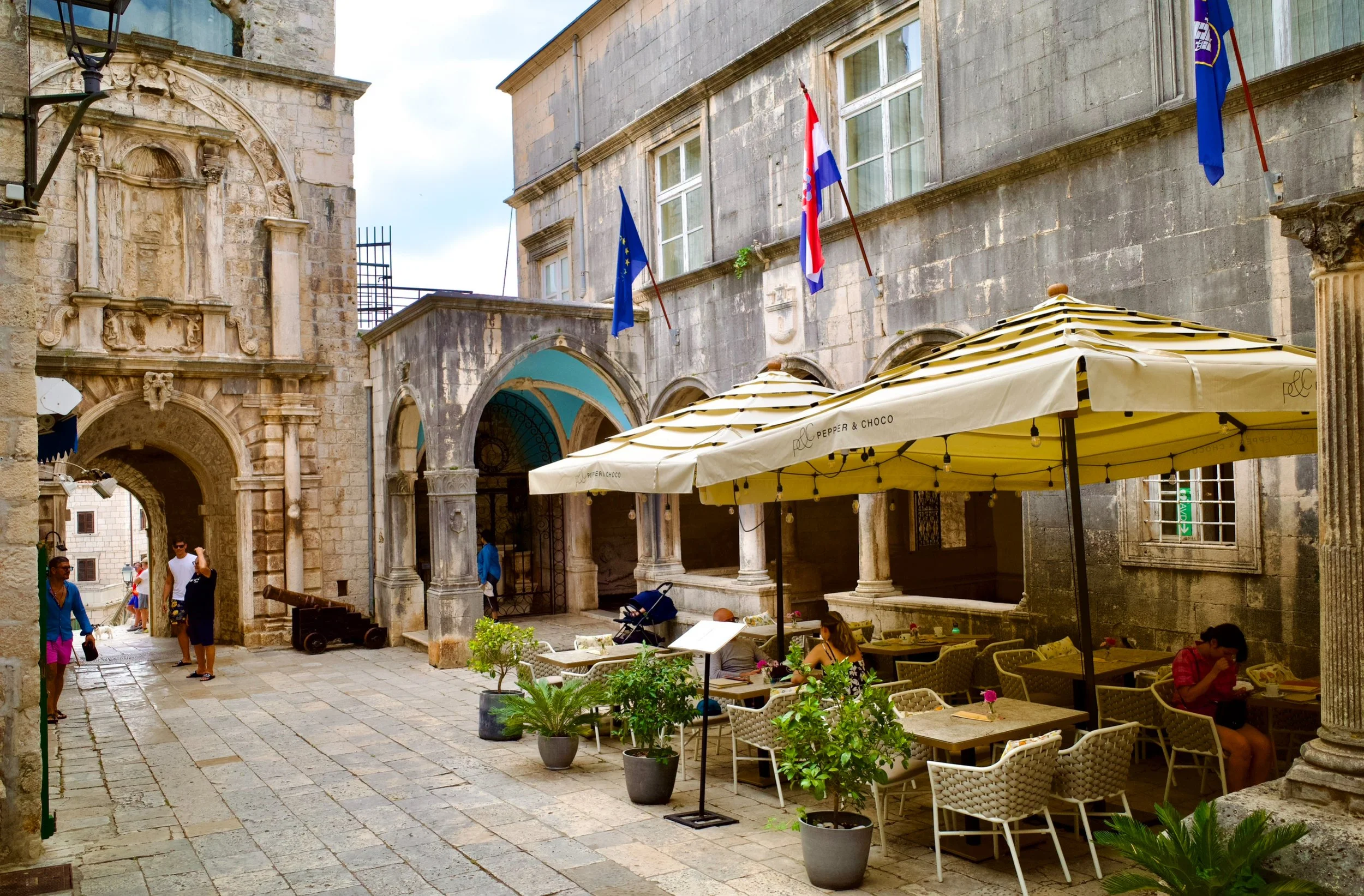Episode 161
Dobro jutro, prijatelji!
Let’s take our lesson back to elementary school level and learn some words that rhyme! Whether you’re writing a poem and boosting your Croatian vocabulary, rhyme-time is sublime!
Lesson
rhyming Words - riječi koje se rimuju
pear and gun - kruška i puška
creep and turn signal - ljigavac i žmigavac
salt, pain and naked - sol, bol i gol
cancer and poppy - rak i mak
wolf and onion - vuk i luk
hour or clock and war - sat i rat
honey and ice - med i led
soup and fly (insect) - juha i muha
mushroom and plum - gljiva i šljiva
Super Slatko Report
For this edition of the Super Slatko Report, DJ Moe will tackle a spooky story in the nature of Halloween. Did you know the legend of JJure Grando? Did you know that during the Middles Ages, Croatia had a legend of a vampire?! Don’t be afraid! Join us!
Tonight, we’re peeling back the coffin lid on something chilling — not from Transylvania, not from Hollywood, but from right here in Croatia. We went digging through folklore, dusty church records, and the occasional late-night legend, and what we found wasn’t just a story — it was a documented case that scholars, priests, and terrified villagers all agreed on.
The story begins in the 17th century, in a quiet little village called Kringa, tucked into the green hills of the Istrian peninsula in western Croatia — about twenty kilometers (12.4miles) inland from Poreč, a sunny coastal town known today for beaches and wine. But back then, around 1650, Istria was part of the Venetian Republic. Life in Kringa was rustic: stone cottages, candlelight, olive groves, and gossip that traveled faster than a horse. People were devout, superstitious, and constantly negotiating with nature — praying for rain, fearing disease, and trusting the priest as the ultimate authority on both heaven and hell.
Enter Jure Grando Alilović, a villager like any other. He worked the land, lived modestly, and was married to a woman named Ivana. They had children, neighbors, and presumably a decent reputation — until 1656, when Jure died and was buried by the local parish priest, Father Giorgio. His passing should have been the end of his story. But in a time when people believed the veil between life and death was thin, the villagers soon whispered that Jure’s story wasn’t quite finished just yet.
Not long after his burial, strange things began around the village of Kringa. Villagers began reporting hearing footsteps outside their doors late at night. Sightings of a shadowy figure on the roads — somone was described as pale, bloated, with a large grin on his face. People claimed they saw Jure himself knocking on doors, calling their names. Those who opened to him were said to die soon after in a matter of days. Jure haunted Kringa for sixteen years, visiting by night, terrifying his widow, and, according to accounts, even appearing inside her bedroom, where she fainted in horror.
Eventually, the people of Kringa decided to do something about it. A band of men led by the local prefect, Miho Radetić, confronted the situation head-on. They opened Jure’s grave, and to their horror found his body perfectly preserved — face flushed, teeth bared in a grin. They tried to pierce his heart with a wooden stake, but it bounced off. In the end, they called Father Giorgio, who performed an exorcism, after that failed, a man named Stipan Milašić finally decapitated Jure’s corpse with a saw. When the blade struck, a scream was said to echo from the grave, and from that moment on, Kringa slept peacefully once again.
But the legend of Jure Grando lived on. His story was recorded by a 17th-century local chronicler and later retold by Johann Weikhard von Valvasor in The Glory of the Duchy of Carniola (1689), making Jure Grando the first vampire ever described in written European history — centuries before Bram Stoker’s Dracula. Today, Kringa embraces its eerie fame: there’s a “Vampire Bar,” themed walking tours, and annual spooky events that turn history into light-hearted lore. Scholars from the University of Zagreb have studied the case as an early example of post-mortem superstition, and horror fans make the pilgrimage to Kringa just to say they’ve seen the home of the original vampire.
So how long did Jure Grando live actually ? We dont know… But many records state that he was born around 1578, and died in 1656. If villagers are to be believed, Jure kept walking until 1672, sixteen bonus years of nocturnal activity; all together 94 years. Whether he was truly undead or merely the victim of folklore fueled by fear, plague, and candlelight, one thing is clear: too many people, from priests to prefects, recorded the same spooky tale for it to be easily dismissed. And so, we leave the crypt door slightly ajar on this one. Was Jure Grando a misunderstood villager, a symbol of superstition, or Europe’s first true vampire? We’ll let you decide.
And thats it for the super Slatko Report, laku noc.






